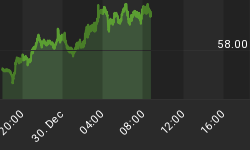According to a report from the Commerce Department (it’s a month late thanks to the federal government shutdown), housing construction dropped 11.2 percent to a seasonally adjusted annual rate of 1.078 million units last month. That is the weakest it’s been since September 2016.
The biggest decline occurred in multifamily projects. They took a 20-percent dive versus a 6.7-percent decline for single-family homes, which account for the bulk of the housing market
Still, housing starts still rose to 1.25 million last year from 1.20 million in 2017. Also, sign that builders will stay busy in coming months is that some 187,000 homes were authorized but not yet started in December, the most since 2007.
The report noted that housing construction was flat in the Northeast in December but fell in the Midwest, South, and West.
Jonathan Kanarek, CEO of Buildfax, a provider of data on property conditions, said that slowing activity in the housing sector may be symptomatic of global economic tensions and dramatic moves in the stock market.
“Given current economic conditions, including the recent government shutdown, sensitivity to interest rate increases and global market stressors, like ongoing trade negotiations, we were not surprised to see persistent declines…It is yet to be seen if an easing of these external factors will alleviate the housing slowdown,” Kanarek said.
However, there is one category that has been posting consistent gains: Demolition activity has risen in the past five years by 16.65 percent across the country. California, Texas, Tennessee and Florida have seen the greatest amount of demolition activity, signaling opportunities for investment.
Last year was when the housing market started to cool down, amid higher mortgage rates, with 30-year mortgage rates climbing to nearly 5 percent, as well as land and labor shortages, which led to tight inventories and more expensive homes.
Still, despite the fact that the mortgage average has declined sharply in recent weeks, it’s possible this won’t help boost home purchases because prices are rising faster than wages, and homes selling for under $250,000 are getting harder to find.
Related: Trade Talks Dominate Market Sentiment
Though mortgage rates have been declining and house price inflation has decelerated, economists expect the housing market weakness to persist at least through the first half of 2019.
A survey last week showed homebuilder confidence increased in February, but builders continued to say land and labor shortages and tariffs on key building materials were keeping costs high.
Through the first quarter of last year, employers have been looking to fill an average of nearly 225,000 construction jobs each month, the average that was present in only one year. That was in 2007, at the tail end of the U.S. housing boom.
According to the Bureau of Labor Statistics, some 90 percent of more 2,700 housing constructions employers are having problems in finding skilled labor. It drove up wages and costs, which essentially caused construction costs to jump 23.6 percent since 2004.
By Fred Dunkley for Safehaven.com
















